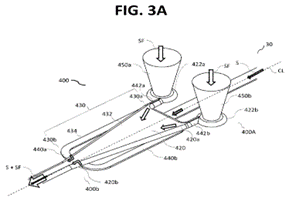In a precedential final written decision, the Patent Trial & Appeal Board concluded that a patent does not need to contain a claim supported by a provisional application’s disclosure to draw priority to that provisional for prior art purposes post America Invents Act (AIA). Penumbra, Inc. v. RapidPulse, Inc., IPR2021-01466, paper 34 (PTAB Mar. 10, 2023) (designated precedential Nov. 15, 2023) (Melvin, Cotta, Wisz, APJs).
Penumbra filed an inter partes review (IPR) petition targeting a patent directed to a “thrombectomy system,” which is a system for removing blood clots in the brain. Penumbra challenged the claims on four different grounds, and each included the Tiegen reference. Therefore, the petition would fail if the Tiegen reference was not prior art.
The challenged patent was filed on July 18, 2019, and drew priority to a provisional application filed on October 24, 2018. Tiegen drew priority to two provisional applications—one dated December 12, 2018, and another dated July 24, 2018. Whether Tiegen was prior art thus depended on whether the challenged patent could draw priority to its provisional application, and whether Tiegen could draw priority to its July 24, 2018, provisional. RapidPulse challenged Tiegen on both bases.
First, the Board assessed the proper priority date for the challenged patent. The Board explained that in order for the patent to draw priority to its provisional application, that provisional application had to provide written support for the challenged patent’s claims. Penumbra argued that the challenged patent’s provisional application did not have written support for the claimed “prevent[ing] forward flow.” RapidPulse responded, arguing that the disclosure of a “minimal amount of momentum from the fluid column” disclosed the claimed “preventing forward flow.” Forward flow generates momentum from the fluid column, so minimizing momentum required preventing fluid flow, according to RapidPulse. RapidPulse also pointed to embodiments that had substantially no forward flow from the distal end of the system.
Penumbra responded by explaining that the provisional application required forward flow in some embodiments, and nothing in the specification stated that the flow should be prevented. The Board agreed, explaining that the provisional application included embodiments with forward flow, and while the provisional recited some embodiments with small amounts of forward flow, the provisional did not indicate that the low forward flow was significant. The Board observed that “one cannot disclose a forest in the original application, and then later pick a tree out of the forest.”
Having determined that the priority date of the challenged patent was July 18, 2019, the Board turned to the priority date of Tiegen. The Board distinguished the present case over Dynamic Drinkware, a 2015 US Court of Appeals for the Federal Circuit case. Dynamic Drinkware states that for prior art purposes, a prior art patent can only draw priority to a provisional application if the prior art patent contains a claim supported by that provisional application. The Board explained that Dynamic Drinkware does not apply post-AIA. Instead, the Board found that, based on the language of AIA 35 [...]
Continue Reading
read more

 Subscribe
Subscribe



